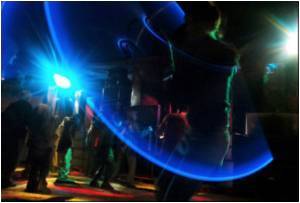
“Hearing loss used to be called ‘blacksmith’s disease.’ In the modern age, it might come to be called MP3 disease,” Dr Bell said.
“The pressure theory has the potential to lead to better measures to protect people from damagingly loud sound levels.”
The middle ear consists of three tiny bones and two miniature muscles which tense up to protect the ear from loud sounds.
Dr Bell said that these bones and muscles work together as a tiny pump, raising the pressure of the fluid in the inner ear – like pushing a cork into a bottle of water. According to Dr Bell, it is the increased pressure that softens the impact of loud noises on the delicate cells that process sound.
The fresh insight delivered in Dr Bell’s paper may help us to understand why some people have ‘tough’ ears that seem impervious to noise-induced hearing loss while others are very susceptible.
Advertisement
The pressure theory was first put forward more than 150 years ago and has since been dismissed. But with the risk of hearing damage associated with the now ubiquitous MP3 player, Dr Bell believes the theory is due for revival.
Advertisement
“All the evidence over the last century can be fitted neatly into pressure theory once you see that the sensing cells in the inner ear are tiny pressure gauges that react instantly to pressure changes.”
Source-Medindia







